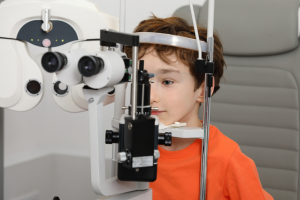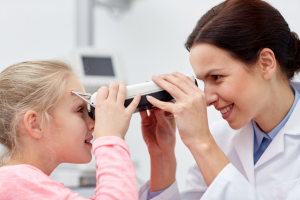
Infants
Development of the eyes takes place between the first 3-10 weeks in the womb. There after changes will continue to occur much till their adolescence. These stages are interpreted into the following significant changes you should be observing in your child and potential problems to be aware of. The well-being of our vision are of great importance as 80% of our memories are created by what we see in day-to-day life.
Warning signs
- Child struggles to track objects by 3 months
- Eyes remain disordered and unable to lock onto objects
- Eyes appear white
Premature babies may have abnormal replacement of tissue in the retina in serve cases can lead to blindness. Hence, internal eye exams should be made to rule out Retinopathy or Prematurity (ROP), highlighting the importance of immediate incubation after birth.

Complaints about double or blurred vision is also a cause for concern to make a visit to the optometrists, which may also offer referrals to the GP if necessary. Dilation can also be performed in our clinics, this observes the retina and optic nerve to identify any on-going problems particularly used to treat sight loss and various other eye conditions.
Other signs of eye sight problems
- Sitting to close to the TV or holding a tablet
- Sensitivity to light
- Squints when reading
- Frequently eye rubbing
- Reports headaches/eye pain
4 months +
In the early 4 months’ baby’s eyesight remains poor as they can only perceive objects 8-10 inches from their face. Hand and eye coordination will begin as they start stacking blocks and track moving objects. Usually minor crossing of the eyes will occur as coordination is yet lacking. Coloured vision is expected to develop at 5 months. You may find as they attempt to examine smaller objects, a cheeky game of hide and seek allows them to build on facial and object recognition.
At 8 months your baby should have clear vision and the ability to calculate distance between objects. Baby’s found to crawl during their growth will have better coordination skills and full 3D interpretation of their surroundings to pick up small objects using their thumb and forefinger. Although in rare cases glasses may be needed.

12 Months +
By 12 months they should be able to tell between near and far. At the two year mark your child should have the capabilities to fully immerse in exploring the environment. Make sure you keep sharp edges especially cabinets away from your child. They also should be encouraged to scribble and draw to create interest in primary colours,visual books cam be helpful in this instance. Colour blindness could also be identified at an early stage, if signs of any struggle to decipher between reds, browns and oranges or blues and purples.
4 Years +
Your child should be able to have an eye test at the age when they are able to decipher their alphabet. Many schools will start screening at the age of 4+. Usually short-sightedness begins at ages 6+ or earlier as computer and tablet usage in children rises. If you recognise your child to have lazy eye, effective procedure is most successful before the age of 7. Also make sure your child’s eyes are UV protected.

The growth spurt
As eyes continue to develop it becomes increasingly important to have regular eye test, the earlier problems are identified the easier they can be treated. Into adulthood eye sight may deteriorate, frequent monitoring is essential particularly if headaches and eye strain occurs. As many as 1 in 5 children are reported to be short sighted. Take advantage that Children under the ages of 16 or those in education will continue to receive FREE eye test under the NHS.
